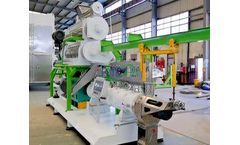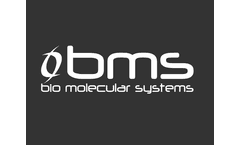Cattle Articles & Analysis
16 articles found
If the straw is used as feed pellets, it can be refined with a 3mm-8mm display. If you want to feed pigs, cattle and also sheep directly after crushing, you can choose a 15mm-30mm display; this crusher is an suitable, effective and cost-effective tools for small and also medium-sized rural pig farms, expert pig farmers and auxiliary processing homes. ...
The following publication describes a study developing the ROP-TB antigen for both in vitro IGRA-based TB diagnosis, as well as the in vivo skin test for TB diagnosis in both humans and cattle. The advantages of the ROP-TB diagnosis are firstly distinguishing Mtb infection from BCG vaccination, and secondly, being suitable for industrial manufacture. ...
Tefen offers you another great solution for the well-being and health of your cattle. Modern intensive housing technics may cause high density and increase the infection rate. So, in order to prevent the spread of diseases and keep high productivity we provide you with an optimal solution for your cattle. You can count on Tefen that the new solution was tested ...
Mic qpcr cycler and Myra liquid handler have been put through their paces in COVID-19-testing field trials in regional Western Australia and found to be noticeably robust, rapidly deployable and flexible. These results have been outlined in a recent paper, Development, deployment and in-field demonstration of mobile corona virus SARS-CoV-2 Nucleic acid amplification test, published by Paton, ...
In the present study, we used a standard method to monitor the degradation of dung from cattle treated with ivermectin. The present study was performed during a 1‐yr period on pastures in Canada, France, The Netherlands, and Switzerland. ...
We compared the abundance of earthworms and springtails in soil beneath dung from untreated cattle and from cattle treated 0, 3, 7, 14, and 28 d previously with ivermectin. ...
Exogenous growth promoters have been used in United States beef cattle production for over 50 years. The environmental fate and transport of steroid growth promoters suggest potential for endocrine disrupting effects among ecological receptors; however, the initial excretion of steroid metabolites from cattle administered growth promoters has not been well ...
Glucuronide conjugates are dominant metabolites in the urine of many species, including deer, cattle, pigs, horses, and humans. However, they could not be detected in ferret urine even though the gene for ferret UDP‐glucuronosyltransferase 1A6 is not a pseudogene. ...
Despite the widespread occurrence of bovine spongiform encephalopathy (BSE) in European countries in the late 1990s and the European Commission Scientific Steering Committee (SSC) report that cattle in Spain were likely infected with BSE agent, Spanish authorities continued to consider their country BSE-free. ...
To date, there have been 14 BSE cases in domestic cattle in Denmark, three cases in Danish cattle exported to other countries, one case in Finland, one in Sweden, and no cases in Norway. ...
Early preventive measures, such as the 1989 domestic ban on ruminant MBM for cattle feed and the 1990 ban on the import of ruminant MBM from the UK along with later European Union-wide measures resulted in a limited scale of the outbreak. ...
Large imports of cattle and meat and bone meal from countries potentially affected by bovine spongiform encephalopathy (BSE) may have led to the BSE agent entering Belgium, and the occurrence of domestic BSE cases. ...
Early, precautionary actions including: a 1989 ban on UK meat and bone meal (MBM), 1990 ban on UK beef, 1994 domestic ban on mammalian MBM to ruminants, and 1996 ban on UK live cattle, protected Italy from a much larger outbreak. In 2001 Italy implemented an effective and active BSE surveillance system in compliance with European Union regulations. ...
To date, the national control programs against BSE in cattle have been successful. The herd incidence of BSE is either at a low level or in decline. ...
Duplicate biosecure structures containing 16 cattle (Bos taurus) mortalities (343 kg average weight) were constructed with carcasses placed on a 40-cm straw layer and overlaid with 160 cm of feedlot manure. ...
Both for cattle nutrition and biofuel production, the improvement in maize (Zea mays L.) cell wall degradability depends on understanding the genetic mechanisms involved in the biosynthesis of phenylpropanoids. ...







